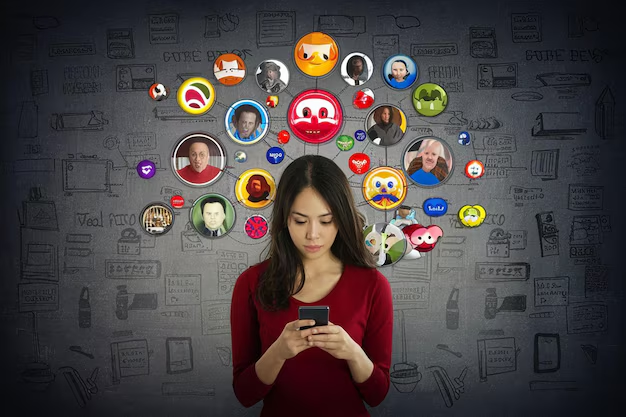In the ever-evolving world of social media, the phrase “Influencers Gone Wild” has emerged as a cultural phenomenon. It represents the moments when influencers step far beyond the boundaries of conventional content creation, often in pursuit of attention, virality, and relevance. These actions, ranging from shocking stunts to controversial opinions, have reshaped not only digital landscapes but also public discourse around fame, responsibility, and ethics.
This blog post delves into the depths of this phenomenon, analyzing how influencer culture evolved to this point, why creators go to such extremes, and what impact it has on brands, fans, and the influencers themselves.
The Evolution of Influencer Culture: From Relatable Creators to Viral Icons
Social media influencers first emerged in the early 2010s as relatable individuals sharing hobbies, lifestyles, or advice with a small community of followers. Over time, they became powerful voices in shaping trends, purchasing behaviors, and even public opinion. Platforms like Instagram, TikTok, and YouTube transformed influencers into celebrities, granting them unprecedented access to audiences worldwide.
By 2025, influencer marketing is projected to surpass $25 billion globally. This growth highlights the value brands place on authentic connections that influencers cultivate with their followers. However, this same authenticity has blurred the lines between personal identity and public persona.
With algorithms rewarding high engagement and virality, many influencers feel pressured to take risks, producing content that shocks, excites, or divides audiences. The demand for constant novelty has created a culture where crossing ethical and moral boundaries often becomes a shortcut to fame.
What Does “Gone Wild” Really Mean in Influencer Culture?
“Gone Wild” in the context of social media doesn’t merely suggest chaos; it refers to influencers engaging in attention-grabbing behaviors that disrupt the status quo. These can include outrageous stunts, provocative statements, or calculated controversies designed to dominate conversations online. This trend reflects a deeper shift in digital culture. Attention has become the most valuable currency, and influencers know that virality often comes from content that sparks outrage or fascination.
Examples of influencers going wild range from prank videos that backfire to public feuds staged for views. While some of these moments bring temporary fame, others result in lasting reputational damage.
The Business of Shock: Why Influencers Go to Extremes
In a highly competitive environment, influencers must constantly innovate to maintain relevance. One strategy involves creating bold or controversial content that cuts through the noise. For some, this means participating in viral challenges; for others, it involves orchestrating dramatic personal stories that captivate audiences.
The financial incentives are significant. Going viral can lead to increased followers, lucrative brand deals, merchandise sales, and exclusive content subscriptions. However, this business model also creates an environment where ethical considerations often take a back seat to potential profits.
Brands have learned to navigate this landscape carefully. While collaborations with bold influencers can drive huge engagement, there’s always the risk of being associated with a controversy that alienates consumers. As a result, many companies now evaluate influencer partnerships based on their alignment with brand values and their history of responsible behavior.
The Psychological Drivers Behind Influencers Gone Wild
The desire for validation is deeply rooted in human psychology, but social media amplifies this need exponentially. Likes, comments, and shares act as instant feedback loops, encouraging influencers to push creative and moral boundaries for greater attention. Fear of irrelevance also drives reckless behavior. As new creators rise daily, established influencers often feel pressured to maintain their status by delivering increasingly outrageous content.
This fear of missing out (FOMO) contributes to cycles of dramatic posts, viral stunts, and public scandals. The mental toll of this pressure is significant. Many influencers struggle with anxiety, depression, and burnout as they attempt to balance their online persona with their real lives. The constant scrutiny from millions of followers leaves little room for error, making the stakes of every post incredibly high.
Cultural Impact: When Influencers Shape Social Norms
The actions of influencers, particularly those labeled “gone wild,” have far-reaching consequences beyond the digital sphere. Their behaviors influence fashion trends, societal values, and even political opinions. As role models for millions, their actions—whether positive or negative—set precedents that followers often mimic. This influence creates a feedback loop where audiences demand increasingly sensational content while also holding influencers accountable for missteps.
Public engagement through shares and comments amplifies controversies, turning minor incidents into full-blown cultural events. At its core, this phenomenon raises important questions about accountability. Are influencers responsible for the effects of their content on impressionable audiences? Or is it the audience’s responsibility to consume content critically?
Viral Scandals That Defined Influencers Gone Wild
Over the past decade, numerous influencer scandals have illustrated the high cost of fame. Logan Paul’s infamous video filmed in Japan’s Aokigahara forest triggered global outrage, leading to YouTube penalties and lost sponsorships. Jake Paul faced criticism for hosting large parties during COVID-19 lockdowns, resulting in legal scrutiny and community backlash. Belle Delphine’s decision to sell “Gamer Girl Bathwater” divided audiences, with some praising her marketing ingenuity and others condemning her for exploiting her fan base.
Meanwhile, James Charles’s controversies regarding inappropriate messaging damaged his reputation and business partnerships. Each case underscores the volatility of influencer fame. While some manage to recover through apologies and rebranding, others find their careers irreparably damaged.
The Consequences of Going Wild: From Fame to Fallout
For influencers, the rewards of virality are often accompanied by severe risks. Reputational damage can result in lost followers, cancelled brand deals, and even platform bans. Studies show that 78% of followers lose trust in influencers after a public controversy, and 65% of influencers report difficulty securing new partnerships following a major scandal.
These outcomes highlight the delicate balance influencers must maintain between entertaining their audience and preserving their integrity.
Mental Health Challenges in the Age of Influencer Fame
Behind curated feeds and viral videos, influencers face immense psychological pressure. The constant demand for content, coupled with public criticism, can lead to severe mental health issues. Anxiety, depression, and burnout are common among influencers navigating the relentless pace of online fame.
The pressure to remain relevant often forces influencers to prioritize their digital persona over their well-being. Many experts advocate for support networks, counseling, and mental health resources tailored to the unique challenges of influencer lifestyles.
The Future of Influencers Gone Wild: Trends and Predictions
The future of influencer marketing points toward a shift in values. Authenticity and transparency are becoming increasingly important as audiences grow weary of manipulative or reckless content. Micro and nano influencers, with smaller but highly engaged audiences, are gaining popularity among brands for their perceived authenticity.
Technological advancements such as augmented reality and virtual reality promise to revolutionize how influencers create and share content. Meanwhile, potential changes in platform algorithms could encourage influencers to produce more meaningful, community-focused content instead of shock-based strategies.
Building a Safer, Healthier Influencer Ecosystem
To create a healthier digital environment, both influencers and brands must prioritize responsibility over virality. Influencers can contribute by sharing authentic stories, engaging in ethical practices, and seeking mental health support. Brands should vet partnerships carefully, ensuring alignment with their values and audience expectations.
Regulatory bodies are also stepping in, requiring clear disclosures of sponsored content and penalizing deceptive practices. As rules tighten, influencers will need to adopt greater transparency to maintain audience trust and avoid legal consequences.
Conclusion
The phenomenon of “Influencers Gone Wild” illustrates the paradox of modern fame. Social media empowers individuals to build careers and influence culture, yet it also exposes them to unprecedented pressures and pitfalls. While the allure of viral fame remains strong, the long-term consequences of reckless behavior serve as cautionary tales for both creators and audiences. Moving forward, the influencer ecosystem must evolve toward more authentic, ethical, and sustainable practices.
By encouraging positive influence and supporting mental health initiatives, we can shape a social media landscape where success no longer depends on chaos but on meaningful connections and responsible storytelling.
Decoding the VA Loan: A Complete Guide for Homebuyers
FAQs
What does “Influencers Gone Wild” mean?
It refers to influencers engaging in controversial, reckless, or ethically questionable actions to gain attention and virality on social media platforms.
Why do influencers behave this way?
Many do so to maintain relevance, satisfy audience demand for drama, or exploit algorithmic rewards for high engagement.
What are the consequences for influencers?
They may lose followers, sponsorships, and platform privileges, and face lasting reputational damage or legal challenges.
Are audiences affected by influencer scandals?
Yes, audiences can be influenced to imitate harmful behaviors or become desensitized to unethical conduct, contributing to a toxic digital culture.
Can influencers recover from a scandal?
Some rebuild their reputation through genuine apologies and rebranding, but others find the damage irreversible, leading to a decline in influence and opportunities.



